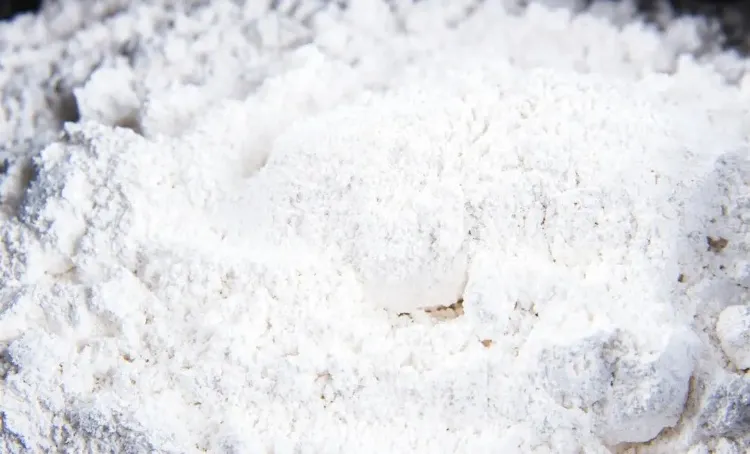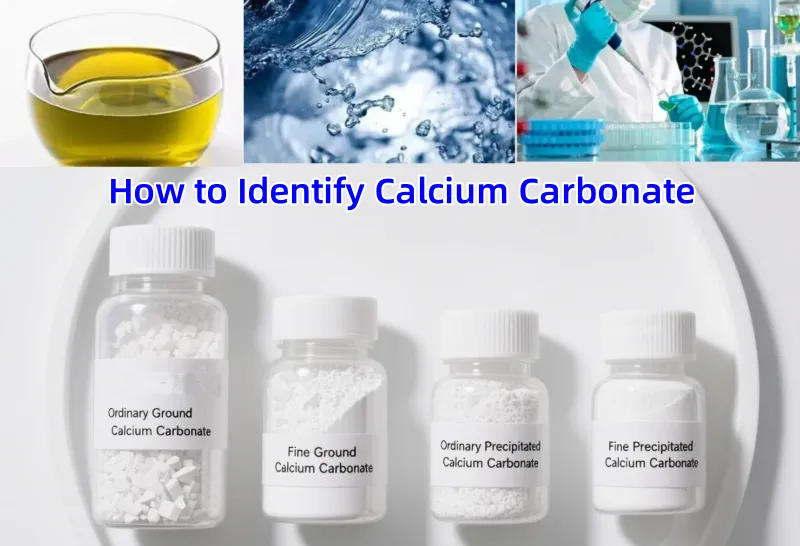Calcium carbonate is a common inorganic compound, often found as limestone, marble, or chalk. It has wide industrial applications and is a crucial building material. Different types of calcium carbonate have varying physical and chemical properties. It is essential to choose the right type for specific needs. Next, we will introduce several common methods to identify calcium carbonate powders. These methods can be used for both laboratory analysis and quality control in industrial processes.

Using Settling Volume to Identify Between Heavy Calcium Grinding and Precipitated Calcium Carbonate
Using Settling Volume to Distinguish Between Heavy Calcium Grinding and Precipitated Calcium Carbonate:
In industrial production, the settling volume is used to indicate the particle size of calcium carbonate, which indirectly helps to determine whether it is heavy calcium (grinded) or precipitated calcium carbonate.
To prevent hydrophobicity caused by surface treatment, it is common to use anhydrous ethanol as a solvent. Before measuring, the surface treatment agent should be removed, and the settling volume test can be performed. The bulk volume can also be used for judgment.
- Precipitated calcium carbonate has a settling volume above 2.5 ml/g.
- Fine and ultrafine calcium carbonate has a settling volume between 2.6 and 8.0 ml/g.
- Heavy calcium carbonate has a settling volume between 1.2 and 1.9 ml/g.
- Heavy fine calcium carbonate has a settling volume between 2.2 and 2.9 ml/g.
When measuring settling volume, if the sample is simply poured lightly into the measuring cylinder, the result is called loose density. If the sample is poured and then shaken to compact, the result is called packed density. It’s important to distinguish between these two.
Using Oil Absorption to Determine Surface Structure

Larger particles with smooth surfaces typically have a smaller surface area and lower oil absorption value. In contrast, finer particles with complex crystal structures have a larger surface area and higher oil absorption value.
For example:
- Ordinary heavy calcium carbonate has an oil absorption value of about 27 ml/100g.
- Heavy fine calcium carbonate has an oil absorption value of about 48 ml/100g.
- Ordinary precipitated calcium carbonate has an oil absorption value of about 60-90 ml/100g.
- Fine precipitated calcium carbonate has an oil absorption value of about 150-300 ml/100g.
Using Hydrophilicity and Hydrophobicity to Determine Activation

Ordinary light calcium and heavy calcium, if untreated, are hydrophilic. They can mix with water in varying ratios, but after stirring and standing for a few hours, they will settle to the bottom of the water due to their own gravity.
Activated calcium carbonate, on the other hand, is hydrophobic and does not dissolve in water. Even after stirring, it will float on the water surface.
This method can be used to identify whether calcium powder has been activated. However, it’s important to note that calcium powder treated with certain activators or coupling agents may not always exhibit hydrophobicity.
Using Specific Surface Area to Determine the Fineness of Powder
The specific surface area of calcium carbonate is commonly measured using the nitrogen adsorption method.
- Heavy calcium powder has a specific surface area of about 1 m²/g.
- Heavy fine calcium carbonate has a specific surface area of about 1.5-2.1 m²/g.
- Ordinary precipitated calcium carbonate has a specific surface area of about 5 m²/g.
- Fine precipitated calcium carbonate has a specific surface area of about 27-87 m²/g.
By combining electron microscopy observations with specific surface area measurements, a more scientific judgment can be made regarding the fineness and particle shape of calcium carbonate.
Distinguishing Different Types of Calcium Carbonate through Chemical Analysis and Physical Testing

For high-purity and reagent-grade calcium carbonate, purity is often the main indicator. The content of harmful elements, such as heavy metals, arsenic, and fluorine, must be controlled within certain standards.
Common international chemical analysis methods and instrumental techniques, such as atomic absorption spectroscopy and ion-selective electrode methods, are used to accurately measure the chemical composition and impurity content of calcium carbonate products, helping to identify the grade.
Epic Powder
Epic Powder, 20+ years of work experience in the ultrafine powder industry. Actively promote the future development of ultra-fine powder, focusing on crushing, grinding, classifying and modification process of ultra-fine powder. Contact us for a free consultation and customized solutions! Our expert team is dedicated to providing high-quality products and services to maximize the value of your powder processing. Epic Powder—Your Trusted Powder Processing Expert !
